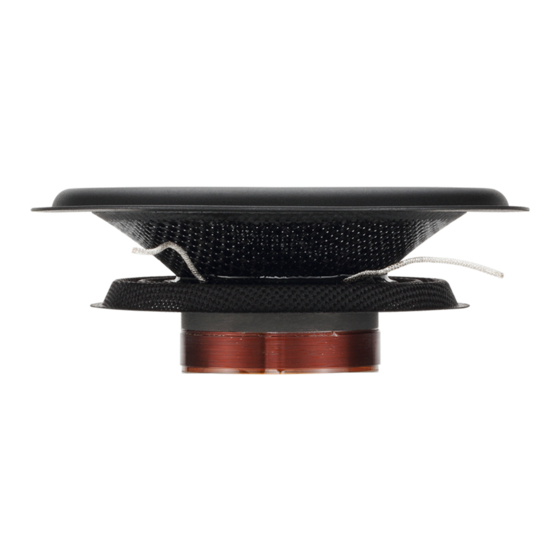
Advertisement
Advertisement
Table of Contents

Summary of Contents for Indy CP4RK
- Page 1 Indy CP4RK 4'' 4Ohm 10cm Coaxial Speaker Recone Kit Instruction manual...
- Page 2 Thank you for choosing Bassface. From the simplest connector to our top of the range amplifier - every element of these products has been designed to give you the best possible performance for your money. Please take the time to read these instructions carefully as they contain useful and important information.
- Page 3 absolutely game changing and unrecognizable that the sound is produced by the same physical product. You can use fiberglass resin, bitumen or butyl based sound deadening, wooden structures or even metal reinforcement panels to help stiffen things up. Secondly, you should pay attention to the area that forms the effective “enclosure” around the back of the speaker.
- Page 4 If your speaker system is one of our component sets with a separate crossover then again, please pay careful attention to mounting and keep the crossover out of the door. If this simply can’t be done due to wiring constraints then make sure the crossover box is on the interior side of the door splash sheet AND PAY ATTENTION TO THE NOTE BELOW.
- Page 5 to replace your old but working existing speakers and you really don’t have the time to follow the advice in this manual to improve your installation – ie you’re just going to replace like with like – what might you expect from the sonic performance? Firstly – you won’t get the most out of your speaker.
- Page 6 Finally I want to introduce you to the concept of time alignment and stereo. This is a complicated subject but an overview is that for the best stereo you should design your speaker system to offer the most equal path lengths between the listener’s left ear and the left speaker and the listener’s right ear and the right speaker.


Need help?
Do you have a question about the CP4RK and is the answer not in the manual?
Questions and answers